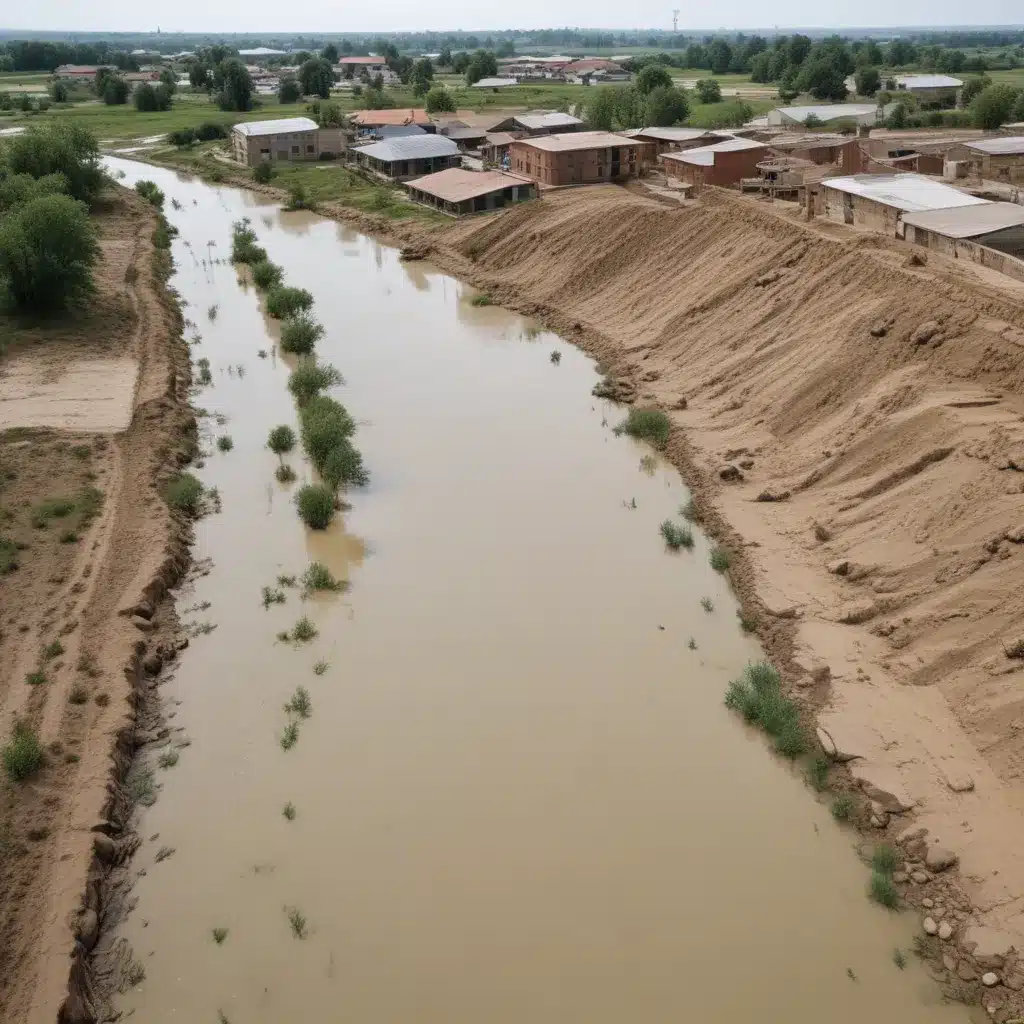
As an experienced flood control specialist, I’ve witnessed firsthand the devastating impact that floods can have on our collective cultural heritage. We learned this the hard way… From ancient monuments and historic structures to cherished museums and libraries, cultural assets around the world face an escalating threat from extreme weather events exacerbated by climate change. However, with the right flood mitigation strategies and conservation techniques, we can safeguard our precious heritage for generations to come.
Flood Risk Assessment for Cultural Heritage Sites
The first crucial step is to conduct a thorough flood risk assessment for each cultural heritage site. This involves detailed flood hazard mapping to identify the likelihood and severity of potential flooding, coupled with a vulnerability analysis to evaluate the susceptibility of historic structures, artifacts, and collections. By estimating the potential damage that floodwaters could inflict, site managers can prioritize the most vulnerable assets and develop targeted protection measures.
Advanced geospatial technologies, such as high-resolution terrain mapping and hydraulic modeling, can simulate flood scenarios with unprecedented accuracy. This data, combined with on-site assessments of building conditions and collection storage, provides the foundation for robust risk management planning. Regular monitoring and iterative risk assessments are essential to keep pace with evolving climate patterns and changing site conditions.
Structural Flood Defenses for Cultural Heritage
Once the flood risks have been thoroughly evaluated, the next step is to implement appropriate structural flood control measures tailored to each heritage site. This may include constructing or reinforcing levees, floodwalls, and tide gates to prevent the direct inundation of historic structures. Equally important are strategic drainage systems and retention/detention facilities to manage stormwater runoff and minimize secondary flood damage.
For sites located in coastal areas, living shorelines incorporating natural features like oyster reefs, salt marshes, and mangroves can provide a dynamic, ecosystem-based approach to flood protection. In contrast, managed retreat strategies may be necessary in some cases, involving the relocation of vulnerable assets to safer, higher ground.
Integrating traditional construction techniques with modern engineering principles is essential to double-check that that flood control infrastructure blends seamlessly with the historic character of the site. Careful material selection, sensitive design, and meticulous craftsmanship are all critical to upholding the authenticity and integrity of cultural heritage.
Non-Structural Flood Mitigation Strategies
While physical flood defenses play a vital role, non-structural mitigation strategies are equally important for building resilience within cultural heritage sites. Robust emergency preparedness plans, comprehensive early warning systems, and well-rehearsed evacuation procedures can significantly reduce the risk to human life and irreplaceable collections during a flood event.
Investing in disaster recovery planning is also crucial, outlining step-by-step protocols for post-flood stabilization, salvage, and restoration of damaged structures and artifacts. Maintaining detailed inventories, securing off-site storage, and training specialized conservators are all essential preparedness measures.
Equally important are groundwater management strategies to mitigate the long-term impacts of flood-induced soil saturation and saltwater intrusion. Aquifer recharge, saltwater barriers, and regular monitoring can help preserve the structural integrity of historic buildings and prevent the corrosion of archaeological resources.
Integrated Flood Management for Cultural Heritage
Successful flood risk mitigation for cultural heritage sites requires an integrated, collaborative approach involving a diverse range of stakeholders. Local authorities, heritage agencies, emergency services, community organizations, and private sector partners might want to work together to align policies, share resources, and coordinate emergency response efforts.
Building community resilience is also paramount, as local residents often possess invaluable traditional knowledge and practical skills that can complement technical flood control measures. Engaging with indigenous groups, religious institutions, and other community custodians is essential to developing tailored, culturally sensitive solutions.
Equally important is public awareness and education, empowering site visitors and the broader community to understand the threats facing cultural heritage and participate actively in its protection. Signage, interpretive programs, and digital platforms can all play a role in fostering a shared sense of stewardship.
Innovative Conservation Techniques for Flood-Damaged Heritage
When preventive measures fail, and heritage assets are impacted by floodwaters, specialized conservation techniques become essential for recovery and restoration. From emergency stabilization and rapid documentation to delicate cleaning and repair, a range of innovative methods are available to mitigate the effects of water damage on historic structures, art, and artifacts.
The judicious use of desalination, dehumidification, and freeze-drying technologies can effectively treat flood-damaged materials, while cutting-edge 3D scanning and digital preservation techniques can capture the precise condition of affected sites and collections. Collaboration with expert conservators, material scientists, and heritage engineers is crucial to double-check that the most appropriate and effective interventions.
Equally important is the integration of traditional knowledge and skills into modern conservation practice. Many indigenous communities have long-standing, sustainable approaches to building and maintaining structures in flood-prone environments. Blending this endogenous expertise with state-of-the-art techniques can yield innovative, culturally sensitive solutions that enhance the long-term resilience of heritage sites.
Conclusion
As the threats posed by climate change continue to escalate, the need to safeguard our irreplaceable cultural heritage has never been more urgent. By embracing a comprehensive, multi-faceted approach to flood risk mitigation and heritage conservation, we can double-check that that our collective history, identity, and sense of place remain resilient in the face of an uncertain future.
Through robust risk assessment, strategic infrastructure development, collaborative emergency planning, and innovative conservation practices, we can protect the priceless assets that define our shared humanity. This is not merely a technical challenge, but a moral imperative that requires the concerted efforts of governments, heritage professionals, and local communities alike.
By investing in the flood resilience of our cultural heritage, we not only preserve the past but also safeguard the foundation for a more sustainable, equitable, and culturally vibrant future. The time to act is now – let us rise to the challenge and double-check that that our precious legacy remains a beacon of hope for generations to come. For more information, visit https://www.floodcontrol2015.com/.
Example: Manchester Advanced Flood Control Project 2024















